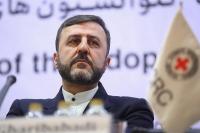
Since the early Revolution of 1979, rival factions faced difficult situation on how to reconcile themselves with diagonally opposed methods the other groups offered and believed in to run a new country facing international pressures and domestic clashes; the rivalry however had not been resolved peacefully; rather, assassinations and bombing by the most extremist and fundamental ex-Revolutionaries, that is, MEK (Mojahedeen-e-Khalq in Persian) killed influential men of the Islamic Republic Party, then dominating the new Parliament (called Majlis of Shoura). The most telling story of their atrocities in early Revolution years is the assassination of democratically-elected President Mohammad Ali Rajaee and his Prime Minister Mohammad Javad Bahonar just less than a month after they resumed office with the approval of Imam Khomeini (RA) in July 1981.
















































